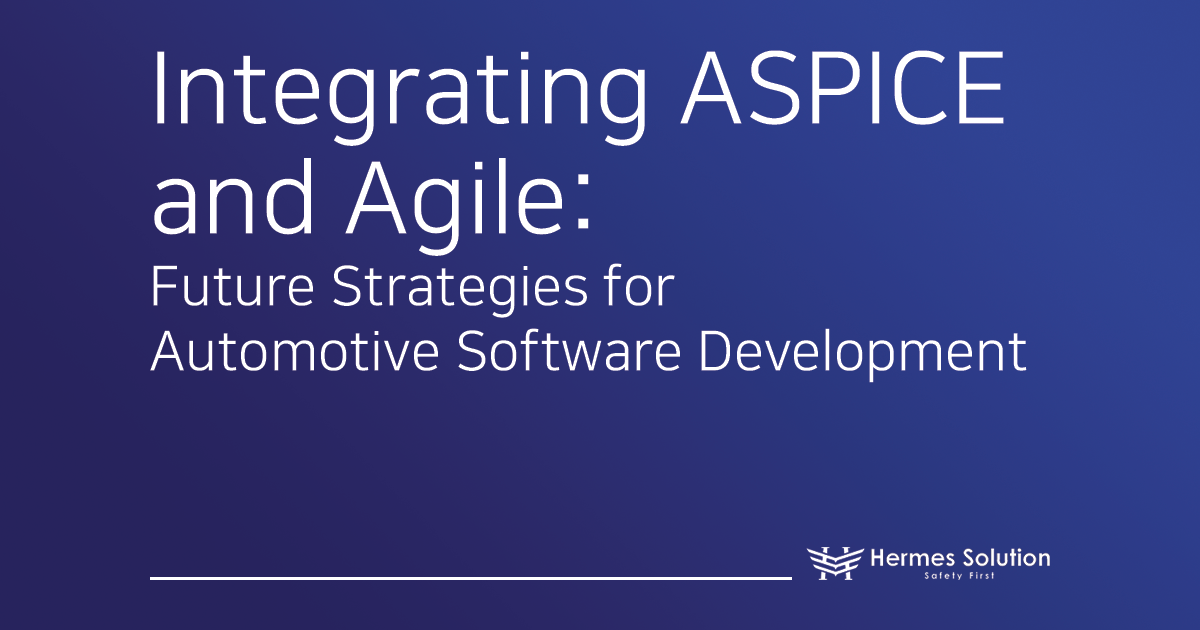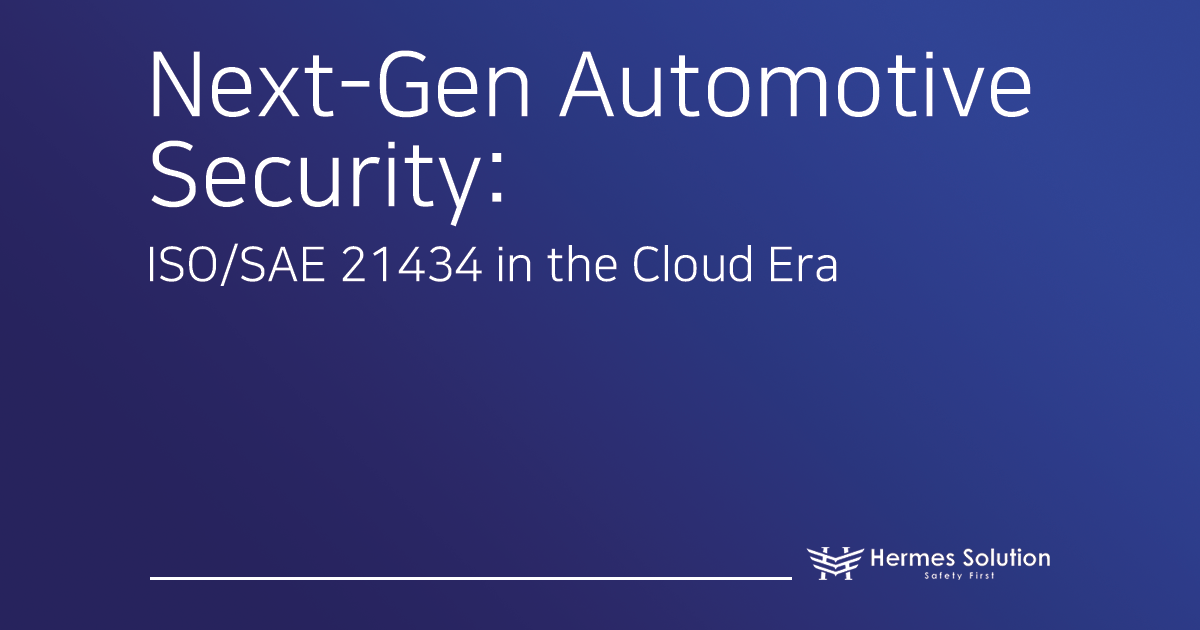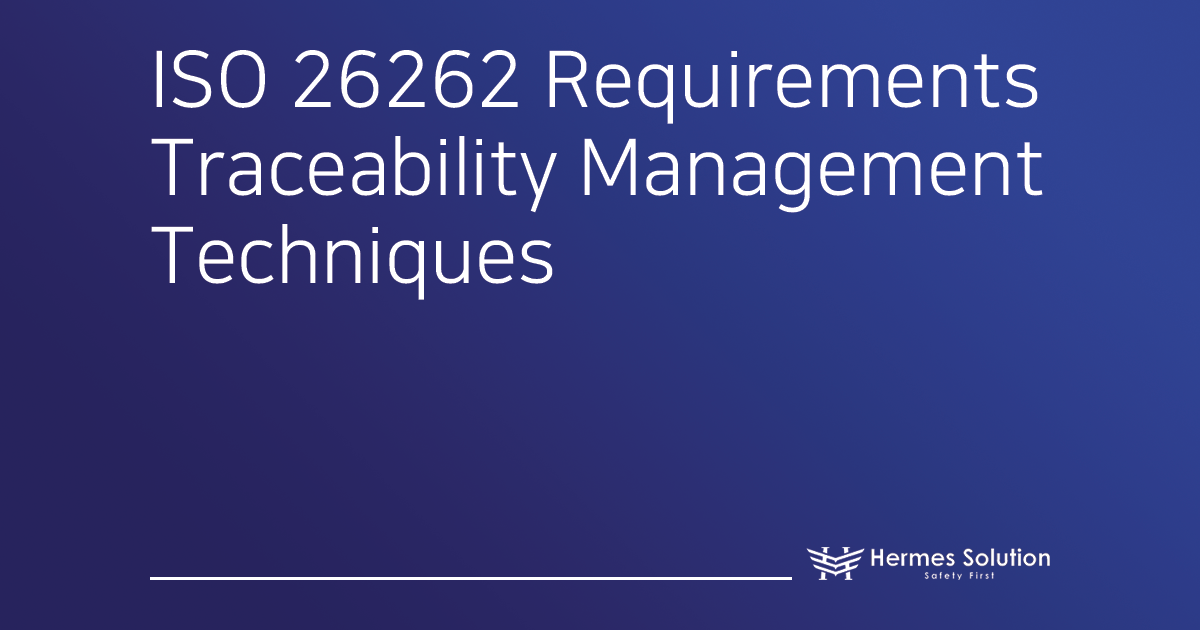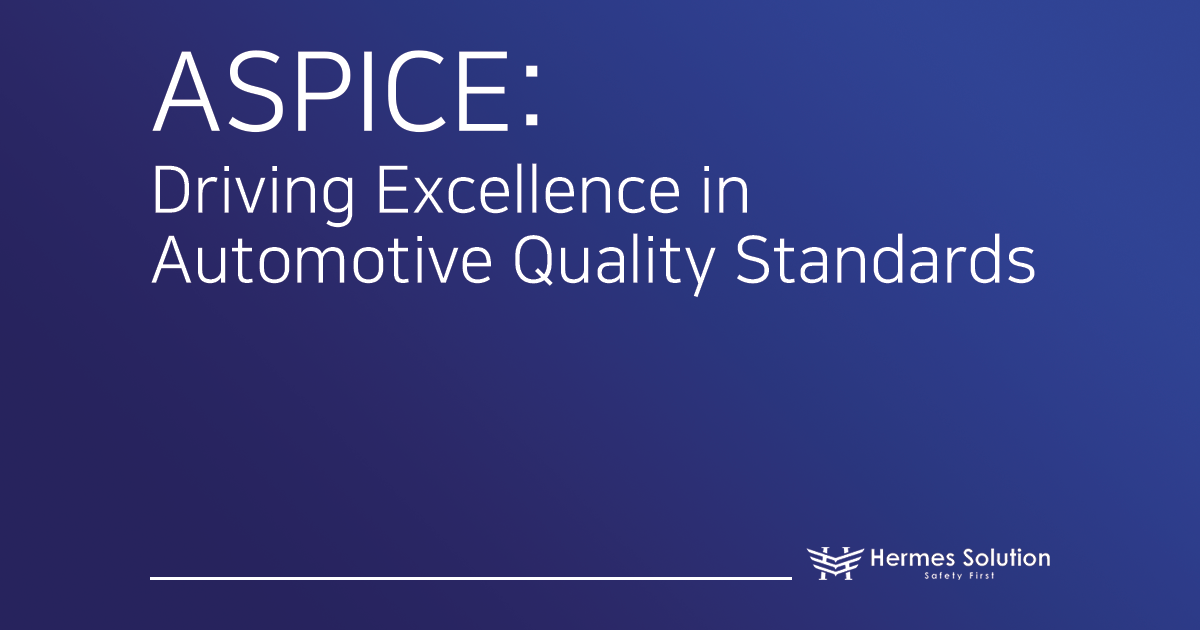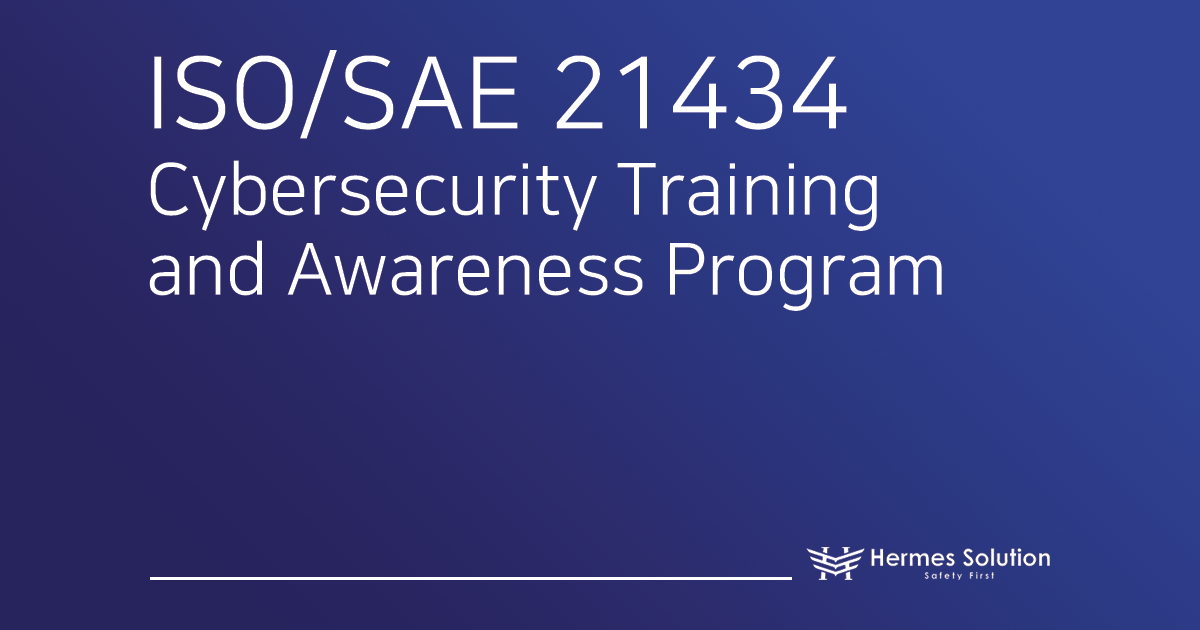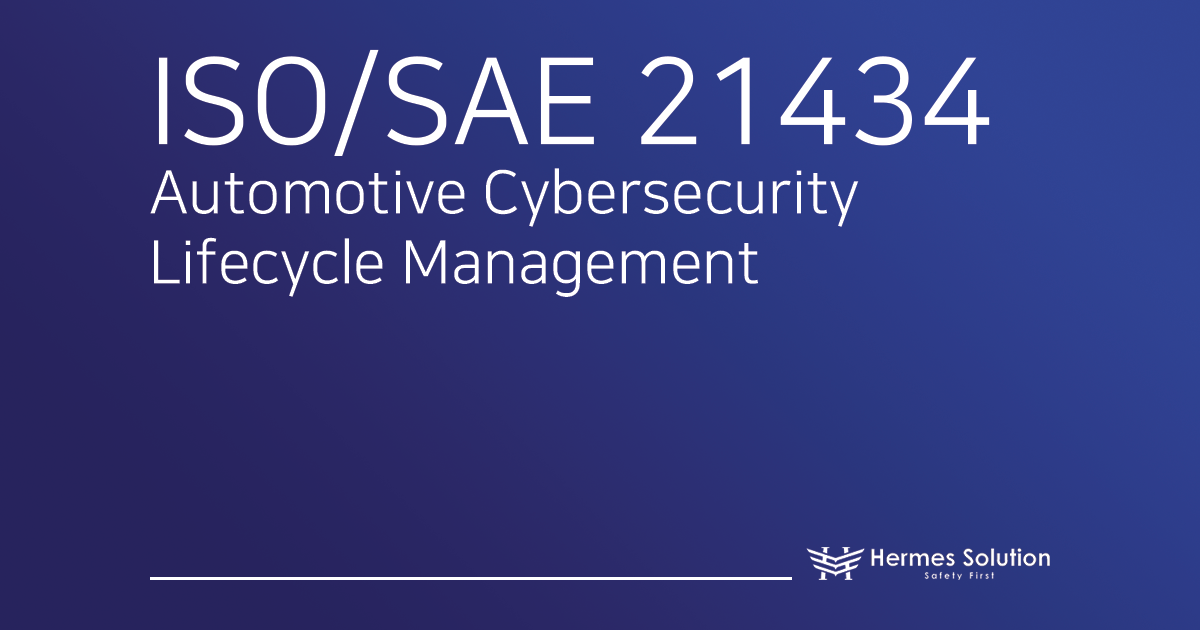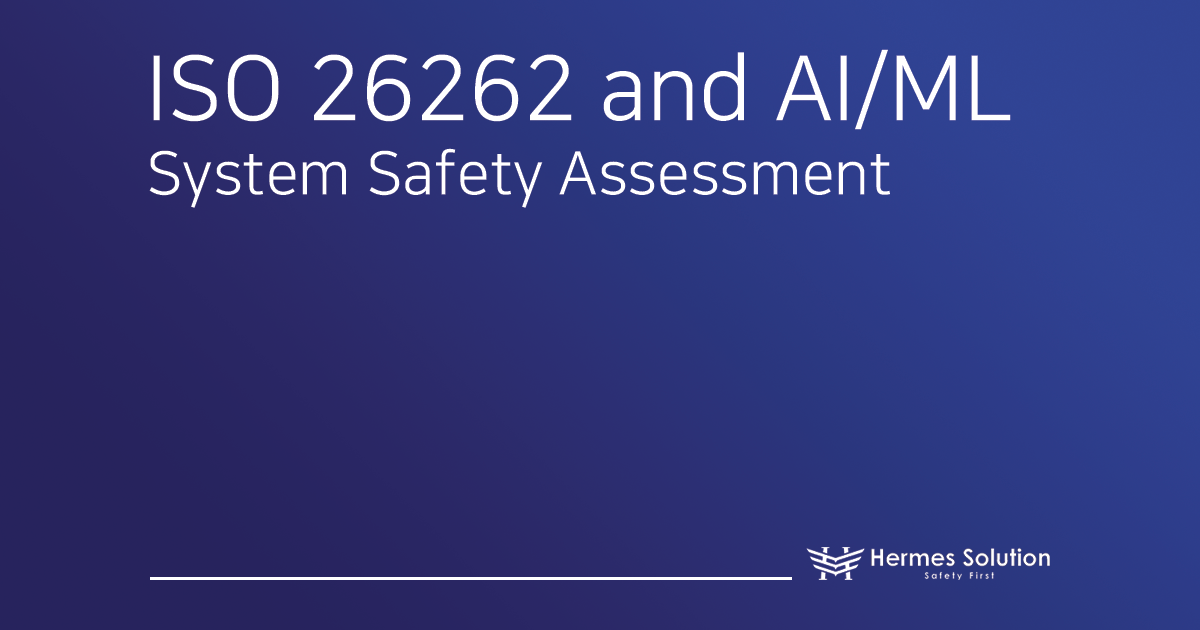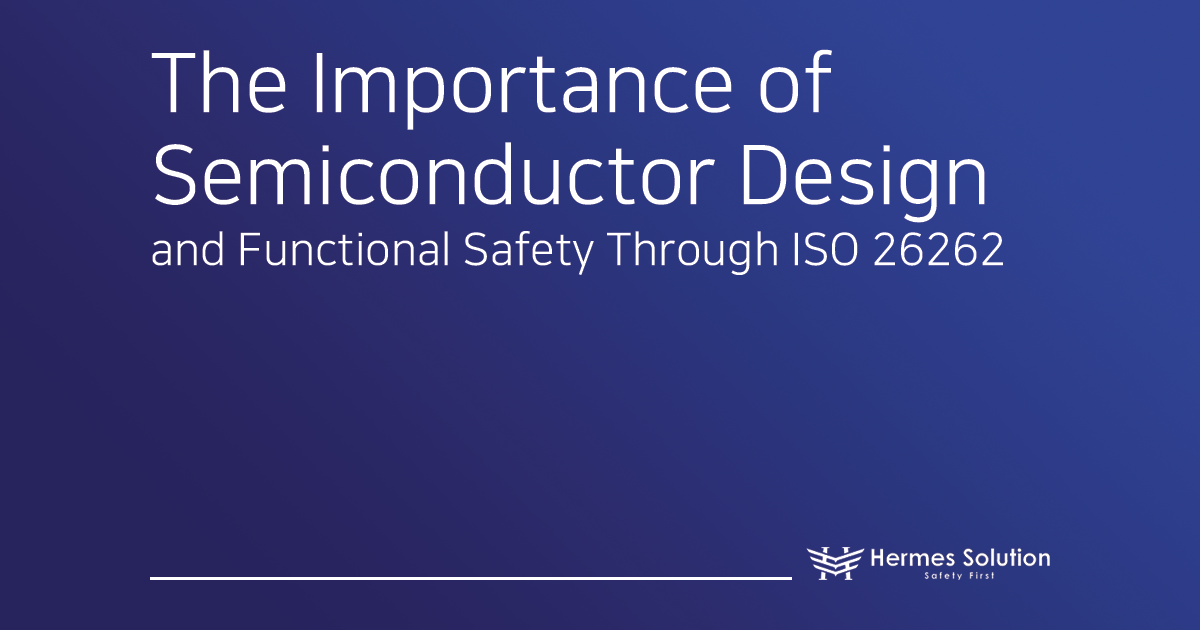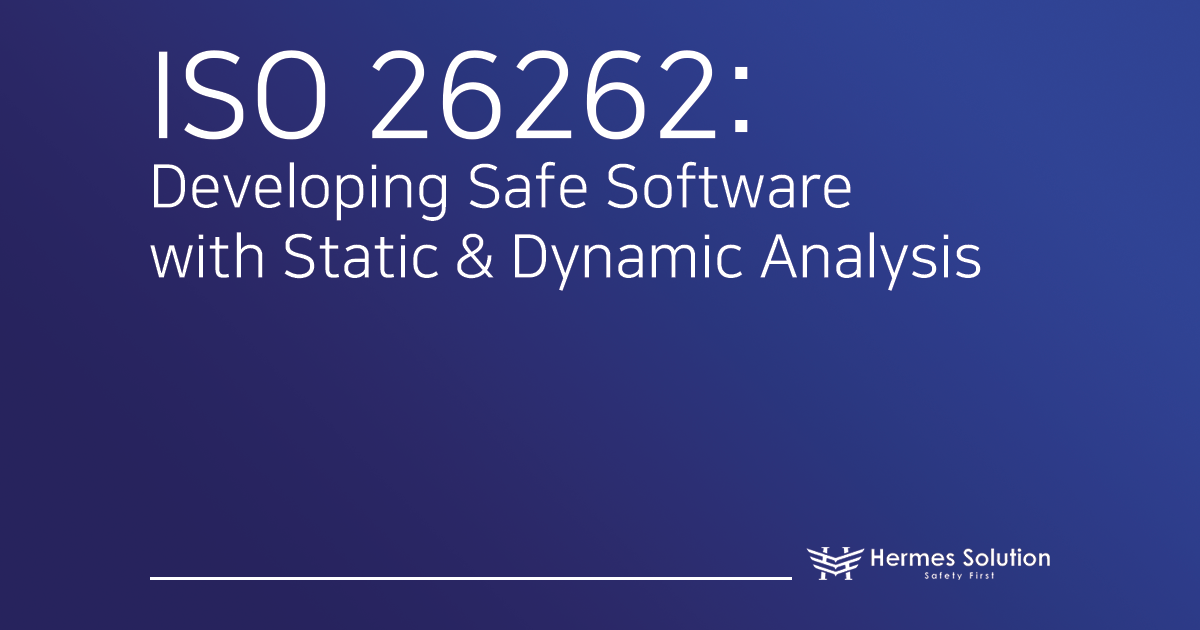The modern automotive industry is rapidly transitioning into an era of software-driven innovation. With the increasing importance of software in vehicles, developers face the challenge of balancing structured frameworks that ensure quality and safety with flexible methodologies that enable rapid innovation. Against this backdrop, harmonizing ASPICE (Automotive Software Process Improvement and Capability dEtermination) with Agile methodologies is emerging as a key strategic approach for the future of automotive software development.
This week at Hermes Solution, we delve deeply into practical strategies for integrating ASPICE and Agile methodologies under the theme “Practical Integration of ASPICE and Agile: Future Strategies for Automotive Software Development.”
ASPICE and Agile: Two Different Worlds
Understanding ASPICE
ASPICE is a framework designed to evaluate and improve software development processes in the automotive industry. Based on the ISO/IEC 15504 standard, ASPICE has the following characteristics:
Closely related to the V-model, focusing on verification and validation at each development stage.
Comprised of various process groups, including management, engineering, and support processes.
Provides capability levels from 0 to 5 to measure process maturity and organizational capability.
Emphasizes traceability and documentation, essential for safety-critical systems.
Many automotive OEMs, particularly German manufacturers, require suppliers to adhere to a minimal set of processes called the “VDA scope.” ASPICE has become essential for ensuring quality, reliability, and safety in complex automotive systems.
The Value and Benefits of Agile
Agile methodology is based on four core values from the Agile Manifesto:
Individuals and interactions over processes and tools.
Working software over comprehensive documentation.
Customer collaboration over contract negotiation.
Responding to change over following a plan.
Scrum and Kanban are common Agile frameworks used in automotive software development:
Scrum: Roles include product owner, scrum master, and development team, utilizing sprint-based workflows.
Kanban: Focuses on workflow visualization, limiting work-in-progress (WIP), and continuous flow.
Agile’s main advantages include improved adaptability, faster market launch, enhanced quality, stronger collaboration, higher customer satisfaction, and reduced risks.
ASPICE and Agile: Conflict and Complementarity
Potential Conflict Areas
ASPICE and Agile methodologies have several clear conflict areas:
Structured, sequential ASPICE vs. iterative, flexible Agile.
Extensive documentation required by ASPICE vs. Agile’s emphasis on “working software.”
Different views on changes after design freezes.
Complementary Elements
Despite these conflicts, both approaches share complementary elements:
Common goals such as high-quality products, continuous improvement, and customer satisfaction.
Agile’s iterative development and early feedback can help achieve ASPICE’s quality objectives.
ASPICE’s structured framework provides necessary rigor for safety-critical areas.
A critical perspective shift is focusing ASPICE on “what” (outcomes), while Agile concentrates on “how” (implementation), enabling the flexibility to adopt Agile methods within the ASPICE framework.
Practical Strategies for Harmonious Integration
Hybrid Models and Agile SPICE™
Several practical strategies support harmonious integration:
Hybrid models combining structured ASPICE planning and documentation with Agile sprints and daily stand-ups.
Agile SPICE™, an Automotive SPICE add-on designed to meet ASPICE requirements while maintaining Agile methods, focusing on outcomes and redefining process attributes to incorporate agility.
Mapping Agile activities and ASPICE processes: Strategies to map Agile outputs like user stories, sprint backlogs, and retrospectives to ASPICE processes and work products (e.g., using sprint reviews for joint reviews, product backlog for requirements management).
Real-world Success Cases
Several companies have successfully integrated ASPICE and Agile:
Bosch: Improved development speed while maintaining quality standards through a hybrid model.
Audi and Porsche: Successfully integrated Agile methodologies within the ASPICE framework.
Luxoft, YASA, Panasonic Automotive: Leveraged industry-specific approaches to maximize advantages of both methodologies.
These cases demonstrate that integrating ASPICE and Agile is practical, not merely theoretical. Many successful implementations utilize tools like Codebeamer, Jira, and YAKINDU Traceability to enhance traceability and collaboration in hybrid environments.
Benefits and Challenges of Integration
Key Benefits
Integrating ASPICE and Agile offers significant benefits:
Improved quality: Combining ASPICE rigor with Agile’s early and continuous testing.
Faster development: Iterative Agile approach accelerates market entry while ensuring process compliance.
Increased customer satisfaction: Strengthened customer collaboration combined with quality assurance.
Enhanced risk management: Early feedback and structured processes facilitate risk identification and management.
Improved team collaboration: Enhanced communication among stakeholders.
Greater adaptability: Flexibility within a structured framework.
Challenges to Overcome
Several key challenges must be addressed for successful integration:
Documentation balance: Finding equilibrium between ASPICE’s documentation requirements and Agile’s emphasis on working software.
Change management: Resolving potential conflicts between structured processes and flexibility.
Organizational support: Securing leadership support and organization-wide buy-in.
Training and skill enhancement: Educating teams in both ASPICE and Agile principles.
Tools and infrastructure: Implementing appropriate tools to support traceability and collaboration.
Overcoming misconceptions: Changing perceptions of ASPICE and Agile as mutually exclusive.
Consistency: Ensuring consistent interpretation and application across teams and projects.
Conclusion: A Balanced Approach for the Future
Integrating ASPICE and Agile is becoming essential rather than optional in automotive software development. Viewing these approaches as complementary rather than conflicting maximizes their value.
By combining ASPICE’s systematic quality management with Agile’s flexible, rapid development, automotive companies can maintain safety and regulatory compliance while responding quickly to market changes. This approach is crucial for remaining competitive in the complex automotive software landscape.
As the industry becomes increasingly software-centric, a balanced approach is essential to achieving optimal innovation speed and rigorous quality control. Implementing hybrid models and specialized frameworks like Agile SPICE™ enables automotive companies to reduce development time, maintain quality, and swiftly introduce new features while meeting safety requirements.
Ultimately, this integrated approach is key to finding an optimal balance between quality, safety, innovation, and market responsiveness. Hermes Solution is your trusted partner on this journey, committed to helping you solve complex challenges and leveraging the strengths of both ASPICE and Agile to deliver innovative, safe, and tailored software solutions.
